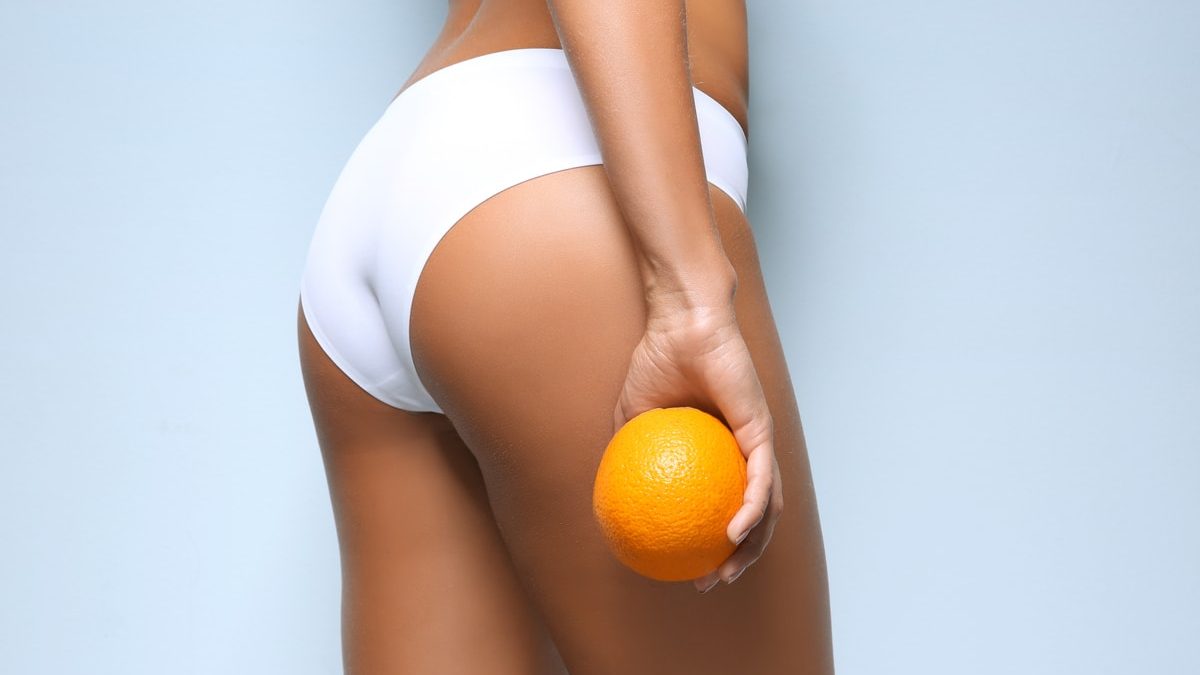Cellulite, a term that often carries with it a desire for understanding and solutions, affects many individuals seeking smoother skin. Despite its commonality, myths abound, leaving people confused about effective treatments. This post delves into the science behind cellulite formation and dispels popular misconceptions. Armed with accurate information and practical tips, our goal is to empower readers to approach cellulite with confidence and clarity.
Understanding the Pathogenesis of Cellulite
Skin Changes
The pathophysiology of cellulite involves alterations at multiple levels. The skin’s structure changes as cellulite forms. These modifications are most evident in the dermis, where a reduction in elasticity occurs.
Collagen, which provides strength and support to the skin, breaks down over time. This breakdown leads to less firmness and can cause dimpling on the surface. Reduced collagen also affects cutaneous microcirculation, impairing blood flow and nutrient delivery to the area.
Hormonal Factors
Hormones play a crucial role in cellulite development. Estrogen, for instance, influences fat distribution and connective tissue health.
In women, hormonal fluctuations can alter blood flow and lead to increased fat deposition beneath the skin. This excess fat pushes against connective tissues causing bumps or dimples that characterize cellulite.
-
Key hormones involved:
-
Estrogen: linked with tissue health.
-
Insulin: may affect fat accumulation.
Muscle contractions influenced by hormones might also impact how well nutrients reach these areas through blood vessels.
Factors Contributing to Cellulite
Genetic Predisposition
Genetic factors play a critical role in cellulite development. Some people are more likely to have cellulite due to their DNA. This genetic link can determine skin structure, fat distribution, and metabolism.
These elements combine to influence how easily cellulite forms. For instance, if your family members have severe cellulite, you might experience it too. Genetics affect the amount of subcutaneous fat and skin laxity.
Diet and Hydration
What we eat impacts our body’s appearance including the presence of unwanted fat. Diets high in fats may contribute to excess fat accumulation beneath the skin surface.
A balanced diet helps maintain healthy weight levels reducing fat cells’ size under the skin. Staying hydrated also influences skin appearance by keeping it supple and less prone to cellulite depressions.
Circulatory System
The health of circulatory and lymphatic systems is crucial for minimizing cellulite severity. Good circulation helps reduce toxins that lead to fat lobules clustering underneath the skin. Regular exercise boosts blood flow which can lessen severe cellulite on thighs or buttocks.
-
Exercise options:
-
Brisk walking
-
Swimming
-
Cycling
Lymphatic drainage is equally important as it removes excess fluids that cause tissue swelling. Massage therapies often target this aspect improving overall skin texture.
Overview of Cellulite Treatment Options
Topical Treatments
Many people turn to topical treatments for cellulite. These products often contain ingredients like caffeine, retinol, and vitamin C. Caffeine helps by increasing blood flow and reducing water retention in the skin. Retinol can improve texture by promoting collagen production. Vitamin C is an antioxidant that may help with skin elasticity.
Topicals are easy to use at home but results vary. They might not work for everyone or could take time to show improvements.
Professional Procedures
For more significant results, professional procedures are available. Laser therapy targets fat cells and stimulates collagen production using focused light energy. This method can reduce the appearance of cellulite over several sessions.
Another option is radiofrequency treatment which uses heat to tighten the skin and underlying tissue layers. It’s non-invasive with minimal downtime.
Both methods have shown promising outcomes in reducing cellulite but require multiple treatments for optimal results.
Emerging Technologies
The field of cellulite treatment constantly evolves as new technologies emerge:
-
Cryolipolysis freezes fat cells without damaging surrounding tissues.
-
Ultrasound therapy uses sound waves to break down fat deposits.
-
Injectable treatments aim at disrupting fibrous bands beneath the skin surface.
Each technology offers a different approach toward managing cellulite, providing options tailored to individual needs and preferences.
Effectiveness of Non-Invasive Reduction Methods
Massage Versus Ultrasound
Massage techniques for cellulite often provide temporary relief. They can improve circulation and make the skin look smoother. However, ultrasound therapy shows more promise. It uses sound waves to target fat cells in the affected area.
Clinical studies suggest ultrasound may lead to a significant improvement in cellulite severity. Yet, results vary among individuals.
Cryolipolysis Outcomes
Cryolipolysis is another popular method that freezes fat cells, causing them to break down over time. This medical procedure has shown some success in reducing the appearance of cellulite.
-
Studies indicate a noticeable reduction in thigh and buttock cellulite for many females.
-
The effects are often seen within three months after treatment.
However, it’s crucial to consider potential side effects like redness or numbness temporarily following the procedure.
HIFEM Benefits
High-intensity focused electromagnetic fields (HIFEM) represent an advanced technique with promising outcomes. Clinical trials have demonstrated its effectiveness as a treatment for abdominal toning and buttocks lifting.
Long-term benefits include:
-
Sustained muscle strengthening
-
Continued fat reduction
The evidence suggests HIFEM could be effective for those struggling with stubborn areas of cellulite on their bodies—both males and females report positive results from this kind of intervention without significant adverse events reported so far.
Injectable and Mechanical Treatments for Cellulite
Subcision Procedures
Subcision is a minimally invasive treatment. A specialized needle cuts through fibrous bands beneath the skin. These bands pull down the skin, creating dimpling.
Patients often see improvements after one session. However, multiple treatments may be necessary for optimal results.
FDA-Approved Injectables
Injectable treatments target cellulite at its source. They are designed to break down fat cells and fibrous tissue.
One such injectable is Qwo, an enzyme that dissolves collagen in fibrous bands. This process can smooth out the skin’s surface over time.
Tissue Stimulation
Mechanical tissue stimulation offers another avenue for managing cellulite. Devices massage affected areas to improve circulation and lymphatic drainage.
Treatment sessions vary but typically involve weekly appointments over several months. Results depend on individual cases but can lead to firmer-looking skin.
Lifestyle and Home Remedies for Management
Daily Hydration
Maintaining optimal hydration is crucial for skin health. Experts recommend drinking at least eight 8-ounce glasses of water daily. This helps keep the skin hydrated and may improve its appearance over time.
Hydrated skin can look more plump and smooth, possibly reducing the look of cellulite. It’s essential to stick with this habit consistently for best results.
Dietary Changes
Eating a balanced diet rich in fruits, vegetables, and healthy fats can enhance skin elasticity. Foods high in antioxidants help protect against damage that can worsen cellulite.
Incorporate omega-3 fatty acids found in fish like salmon or flaxseeds. These nutrients are known to support skin health by strengthening cell membranes.
Over-the-Counter Creams
Certain creams containing caffeine or retinol might provide temporary relief from cellulite’s appearance. Caffeine can dehydrate cells, making the area look smoother temporarily.
Retinol-based products may take several months to show an effect but could help thicken the skin’s outer layer over time. Always follow directions when using these treatments to avoid irritation or adverse effects.
The Role of Exercise and Weight Loss in Reduction
Strength Training
Strength training is key to changing body composition. It builds muscle, which can make cellulite less visible. When you have more muscle, your skin looks smoother and firmer. This can reduce the look of cellulite.
Muscles use calories even when at rest, so increased muscle mass may help with weight loss over time. Also, strength training boosts metabolism. A higher metabolism helps in burning fat more efficiently.

Fat Loss
Losing fat can improve the appearance of cellulite. Cellulite consists of fat deposits pushing through connective tissue beneath the skin, creating dimples or depressions.
When you lose weight, these fat deposits shrink. This makes your skin’s surface appear smoother as there are fewer bulges pressing against it.
Targeted Exercises
Certain exercises focus on areas where cellulite often appears: thighs, buttocks, and abdomen.
-
Squats and lunges work for legs and buttocks.
-
Planks and abdominal crunches target the stomach area.
These exercises might not get rid of cellulite completely but they do contribute to overall fat reduction which will decrease its visibility.
Future Directions in Cellulite Treatment and Prevention
Genetic Therapies
Genetic therapies hold promise for cellulite reduction. Researchers are exploring ways to target the genetic factors that contribute to its development. In time, we may see treatments that can alter the expression of certain genes associated with skin structure.
These advances could lead to a decrease in cellulite by improving collagen production or repairing connective tissue. While still in early stages, this approach has potential for long-lasting results.
Laser Technology
Laser treatments are evolving rapidly. The next few years may bring lasers that reach deeper layers of skin without damaging the surface.
This would mean more effective cellulite treatment with fewer side effects. Dermatologists anticipate new devices capable of targeting specific areas with precision.
AI Integration
Artificial intelligence (AI) is set to revolutionize personalized care plans for those battling cellulite. AI can analyze a person’s unique skin characteristics and suggest optimized treatment protocols.
With AI assistance, dermatologists will be better equipped to recommend interventions tailored specifically to each individual’s needs and progress.
Final Remarks
Cellulite, a multifaceted dermatological challenge, persists as a source of aesthetic concern. This article has traversed the complex origins of cellulite, its contributing factors, and the myriad of treatments available, ranging from non-invasive methods to injectables and mechanical interventions. Emphasizing the interdisciplinary nature of cellulite management, it underscores the significance of lifestyle modifications and exercise in tandem with medical approaches for effective reduction. The synthesis of these elements reflects a comprehensive understanding that is vital in navigating cellulite treatment.
Looking ahead, advancements in medical research promise innovative solutions for cellulite prevention and eradication. Readers are encouraged to consult healthcare professionals for personalized advice and to stay abreast of emerging treatments that may enhance their journey toward skin confidence. Let this be a call to action for continued exploration and application of evidence-based strategies in the pursuit of cellulite reduction.
Frequently Asked Questions
What causes cellulite to form on the body?
Cellulite results from fat deposits pushing through connective tissue beneath the skin, often influenced by factors such as hormones, genetics, diet, and lifestyle.
Are there effective non-invasive treatments for cellulite reduction?
Yes, non-invasive methods like massage therapies and laser treatments can temporarily reduce the appearance of cellulite.
Can injections or mechanical procedures successfully treat cellulite?
Injectable treatments and mechanical procedures can improve cellulite appearance but typically require multiple sessions and maintenance.
Do home remedies have an impact on managing cellulite?
Certain home remedies may offer minimal improvements in skin texture; however, their effectiveness is not comparable to clinical treatments.
How does exercise contribute to reducing cellulite?
Regular exercise helps in weight loss and muscle toning which can diminish the visibility of cellulite over time.
Will losing weight eliminate my cellulite completely?
Weight loss might reduce the severity of cellulite but may not entirely eliminate it due to its complex pathogenesis involving more than just fat accumulation.
What are some emerging techniques for treating and preventing cellulite?
Research is ongoing into new interventions including advanced laser therapies and pharmacological agents aimed at altering connective tissue structure.





